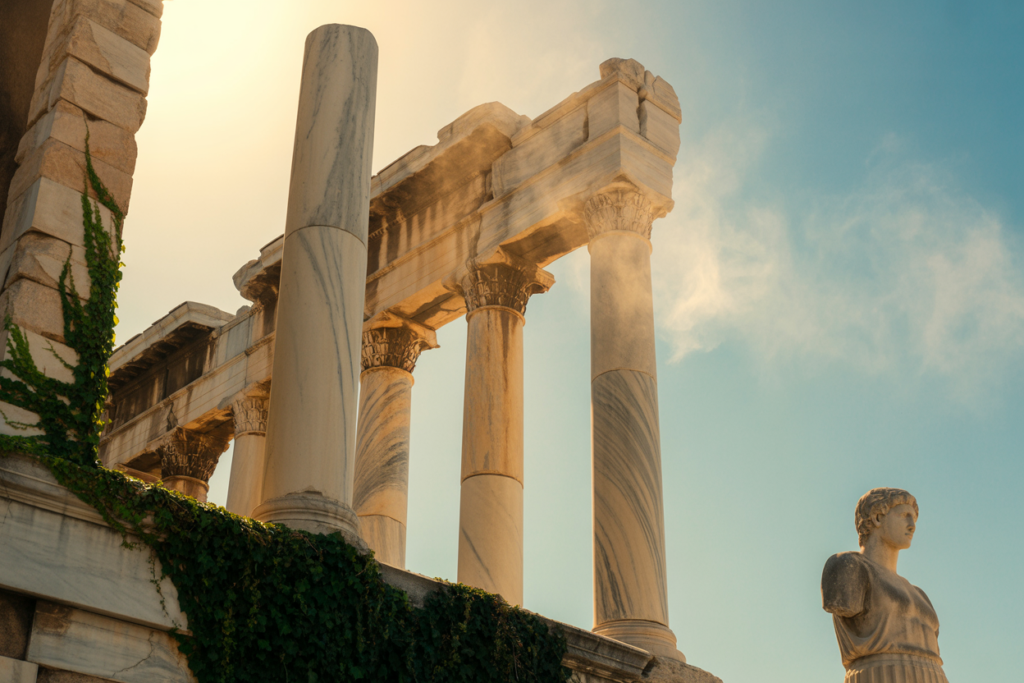Ever walk past an abandoned building and wonder what happened there? Now zoom out—like, thousands-of-years-out—and you’ve got entire empires that just up and vanished. Civilizations once buzzing with life, trade, and the occasional gladiator fight are now tourist attractions and archaeological playgrounds. This article explores ten of the most intriguing “lost” empires—civilizations that were major players in their time but eventually faded into the background (or completely disappeared). Let’s get curious.
The Minoans Weren’t Just About Fancy Pottery
The Minoans lived on the island of Crete and were basically the ancient world’s artsy hipsters. They had plumbing before most people figured out what a bucket was for. Their palaces were huge, colorful, and impressively complicated. Nobody’s entirely sure what caused their downfall, but a giant volcanic eruption plus some bad neighbors probably didn’t help. They were doing great until—poof—civilization ghosted.
The Indus Valley People Really Knew City Planning
The folks in the Indus Valley built cities with actual street grids and drainage systems, and this was over 4,000 years ago. We’re talking better city planning than some modern towns. They had weights, measures, and public baths, which suggests they were clean and organized. But for reasons still debated (climate change? economic collapse?), they faded out without much drama. They didn’t even leave us a Rosetta Stone to crack their script.
The Nabataeans Were More Than Just Petra
You’ve probably seen photos of Petra—you know, that building carved into a cliff that looks like a movie set? That was the Nabataeans’ flex. These desert traders made serious bank moving goods through the Arabian Peninsula. They were incredibly skilled engineers who could collect water in the middle of the desert. But once trade routes shifted and Rome moved in, their star faded. Eventually, even their language disappeared.
The Hittites Had a Major PR Problem
The Hittites were once a big deal in what’s now Turkey, even giving the Egyptians a run for their money. But for centuries, historians didn’t believe they existed—until someone stumbled upon their old capital in the 1800s. Turns out, they were writing in their own language and building a mini-empire while everyone else was busy talking about Egypt. Their collapse came quickly, and we still don’t know exactly why, but their comeback story in modern archaeology is pretty solid.
The Olmecs Gave Us Giant Stone Heads and Vibes
The Olmecs were Mesoamerica’s original influencers, long before the Mayans and Aztecs showed up. They left behind massive stone heads, mysterious artifacts, and a ton of questions. They didn’t build cities like later cultures did, but their art and symbols shaped civilizations that came after. As for what caused them to vanish? Climate shifts, migration, and possibly just blending into other cultures. Honestly, they kind of soft-exited history.
The Sogdians Were the Silk Road’s Secret Sauce
Tucked between major empires, the Sogdians ran trade like pros. They weren’t the biggest or flashiest, but they connected China to the West before Zoom meetings or FedEx were a thing. They were multilingual, multicultural, and just really good at making deals. Eventually, stronger powers absorbed them, and their name got buried under layers of empire. Still, without them, your “Made in China” label might not exist.
The Aksumites Had Gold Elephants and WiFi Just Kidding
The Kingdom of Aksum was a powerhouse in East Africa with international trade links and its own written script. They minted coins, built stone obelisks, and even got a mention in ancient texts from Europe and Asia. At their peak, they were converting to Christianity while keeping trade rolling. But then, climate issues and shifting trade routes pushed them into decline. Aksum didn’t get erased; it just quietly stepped off the global stage.
The Etruscans Taught Rome a Few Things
Before Rome became Rome, the Etruscans were the cool older cousin. They gave Rome its alphabet, religious practices, and gladiator games—basically everything iconic. But the Romans weren’t the best roommates and eventually absorbed them completely. Their culture got overwritten, and even their language got lost. So now they’re more of a historical footnote, but an incredibly important one.
The Khmer Empire Built Angkor Wat and Then Peaced Out
The Khmer Empire in Cambodia built Angkor Wat, one of the largest religious monuments in the world. They engineered elaborate irrigation systems that made rice farming look like a sci-fi project. But after centuries of prosperity, their infrastructure started failing, and neighboring invasions didn’t help. People moved out, the jungle moved in, and the empire sort of vanished behind the trees. Cue centuries of “Wait, who built this?”
The Mycenaeans Had a Greek Tragedy Moment
Before Zeus and toga parties, the Mycenaeans were the big shots in ancient Greece. Think of them as the prequel to the Greeks you studied in school. They built big palaces, wrote in Linear B (catchy name), and probably inspired the Iliad. Then, around 1200 BCE, everything collapsed—palaces burned, writing disappeared, and people scattered. What caused it? Natural disasters? Sea People™? Historians are still guessing.

